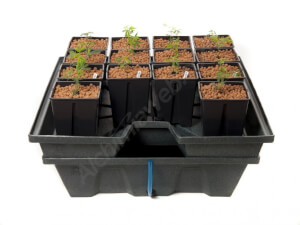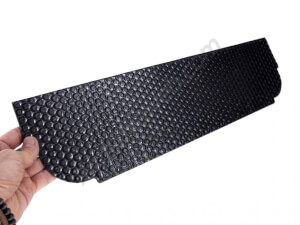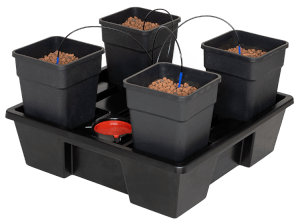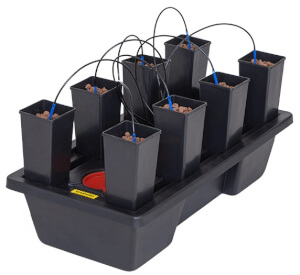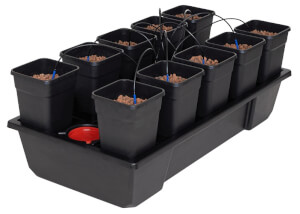What is hydroponic farming?
Hydroponics is a soilless growing technique, where plants grow in an aqueous solution rich in essential nutrients (nitrogen, potassium, calcium, etc.), or inert media such as coconut fiber or rock wool, without using traditional soil.
Types of hydroponic systems
- Ebb & flow: Trays that flood and drain periodically. Ideal for species diversity.
- NFT (Nutrient Film Technique): constant film of nutrient water in inclined channels. Very efficient with water.
- Floating root culture (DWC): Plants in floating substrate on an oxygenated reservoir. Simple and effective.
- Wick: No pumps, nutrients are absorbed by wicks from the reservoir. Perfect for beginners.
- Aeroponics: suspended roots sprayed with nutrient mist; maximum oxygenation, but an advanced technique.
Advantages of hydroponic cultivation
- Lower water consumption (up to 50–90%) compared to traditional agriculture.
- Greater efficiency and performance, thanks to nutrient and environmental control.
- Absence of soil, which reduces diseases, pests, and waste.
- Adaptable to small spaces, ideal for indoors, balconies, or urban gardens.
- Year-round cultivation, regardless of the weather.
Disadvantages and challenges
- Initial cost: requires pumps, pH/EC meters, and climate control.
- Greater technical surveillance, nutrients, and pH must be monitored.
- Risk of rapid spread of pathogens in recirculated water.
Who is it ideal for?
- Urban and hobby horticulturists with limited space.
- Small producers who need continuous and controlled crops.
- Interested in sustainability, with water and resource savings.
- Educational or technical projects, due to their precision and traceability.
Basic assembly to get started
- Choose the system: wick or floating root if you are a beginner.
- Prepare a balanced nutrient solution and adjust pH to 5.5–6.5.
- Use inert substrate (perlite, coconut, or rock wool) for support.
- Install pump (except wick), LED lighting, and aeration.
- Control light, temperature, humidity, and nutrients regularly.
Optimize your results with AlchimiaWeb
On our website, you'll find complete kits, pumps, meters, substrates, nutrients, and accessories tailored to each system, with detailed guides and support.
Frequently Asked Questions About Hydroponic Growing
Which hydroponic system is right for me based on my level?
- Beginners: Floating Wick or Root System (DWC).
- Intermediates: ebb and flow or NFT.
- Advanced: aeroponics or vertical cultivation in containers.
How much water do I save?
Hydroponics saves between 50% and 90% compared to traditional irrigation.
Can all types of plants be grown?
It works very well with leafy greens (lettuce, spinach), herbs, tomatoes, cucumbers, and strawberries. Some larger plants also perform well.
Does it require constant maintenance?
Yes. You should monitor pH, EC, temperature, water oxygenation, and renew the nutrient solution every 1–2 weeks to avoid imbalances.
How do I avoid diseases in recirculation?
Maintain cleanliness, control water temperature (<22°C), and avoid pumping interruptions.
Is hydroponics eco-friendly?
Yes. It uses less soil and water, reduces pesticides, and can be used with organic nutrients or natural waste such as guano or algae.




